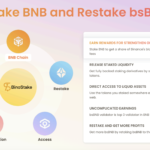Americans now need to earn a higher income than ever before in order to afford a median-priced home, according to a recent analysis conducted by Redfin. The report states that homebuyers in the US must now make 15% more than they did last year to purchase a typical property. This translates to an annual income of $114,627, which is over 50% higher than the income needed in 2020, when $75,000 was required.
The affordability crisis can be attributed to surging costs and skyrocketing mortgage rates. Redfin reveals that monthly mortgage payments reached a record high of $2,866 in August, marking a 20% increase compared to the previous year and a staggering 81% increase from 2020. The Federal Reserve’s decision to tighten interest rates in response to rising inflation has significantly influenced the rise in mortgage rates. In fact, the average 30-year fixed mortgage rate hit 7.57%, the highest level in over two decades, after starting at around 7.07% in August.
While traditionally higher mortgage rates tend to result in lower home prices, this is not the case currently. The lack of supply has caused home values to appreciate, with the typical home selling for $420,000 in August, a 3% increase from the previous year. Redfin Economics Research Lead Chen Zhao explains that despite a slight increase in new listings, inventory remains near record lows as homeowners hold onto their low mortgage rates, ultimately driving up prices.
This affordability crisis primarily impacts first-time homebuyers who often lack the necessary equity from selling a previous property. Average American households fall short by approximately $40,000 in meeting the required income level, based on last year’s data. Although hourly wages have increased this year, these gains are overwhelmed by rising home prices.
To tackle the issue, Chen Zhao suggests that buyers, especially first-timers, consider alternative options such as condominiums or townhouses, which tend to be more affordable than single-family homes. Another option is to explore more affordable areas or suburbs within the country. However, the market’s unaffordability extends beyond Redfin’s findings. Goldman Sachs recently highlighted that homes are even more unaffordable now compared to the period preceding the 2008 housing crash.
As the cost of homeownership continues to rise, it is clear that Americans will face ongoing challenges in affording a home. With increasing demand and limited supply, potential buyers must evaluate innovative strategies and adapt their expectations to overcome these obstacles.

I have over 10 years of experience in the cryptocurrency industry and I have been on the list of the top authors on LinkedIn for the past 5 years. I have a wealth of knowledge to share with my readers, and my goal is to help them navigate the ever-changing world of cryptocurrencies.











